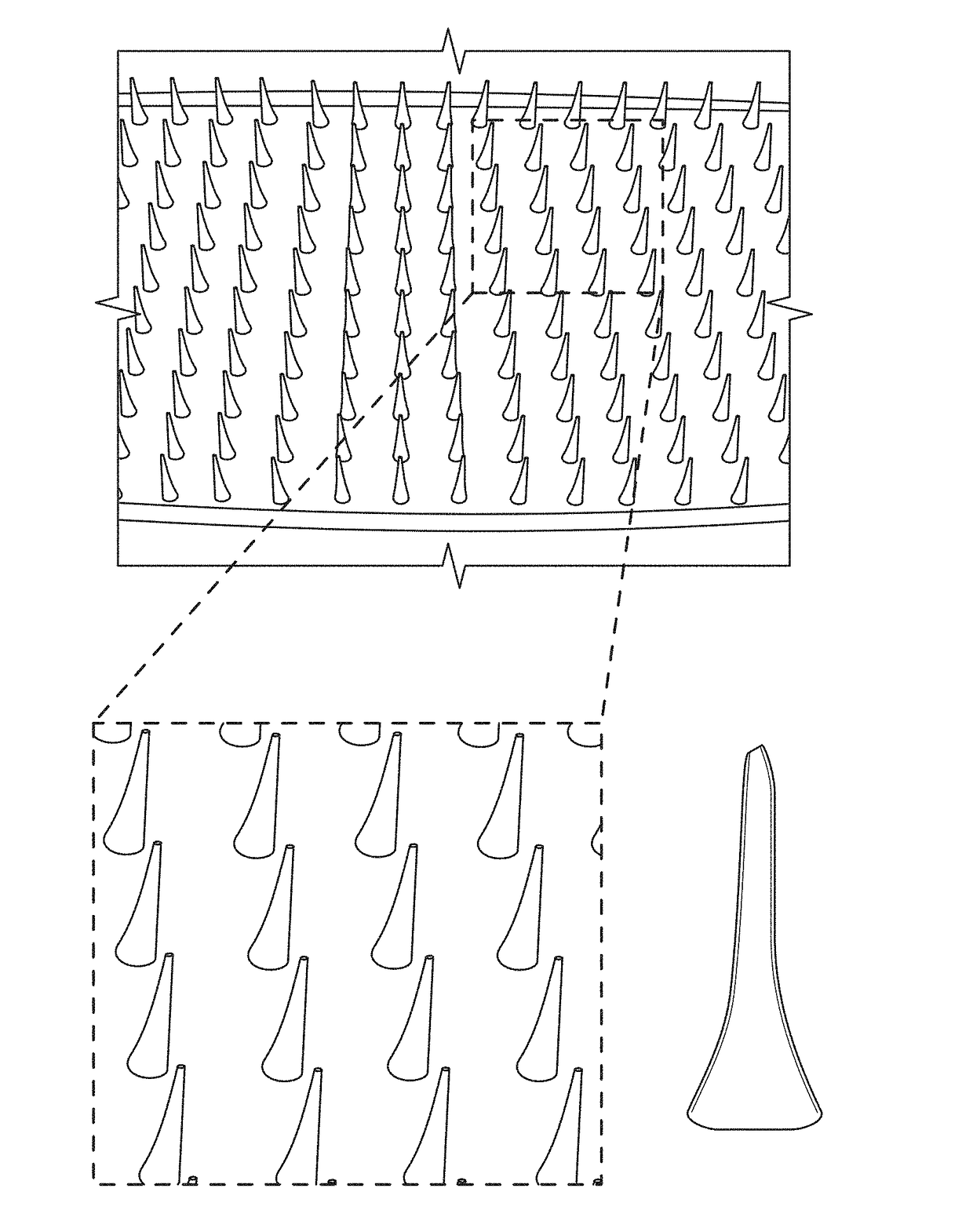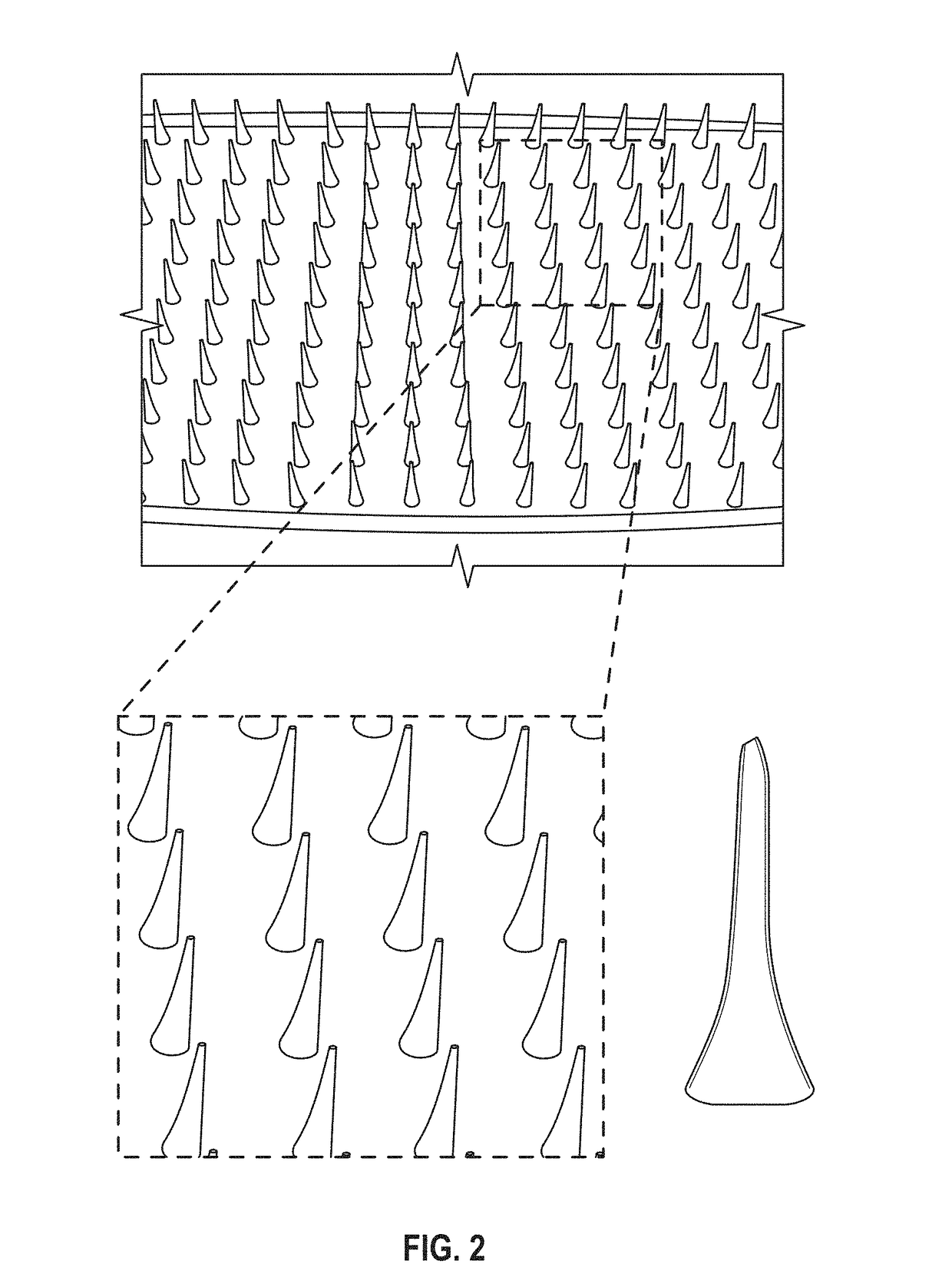Microneedle compositions and methods of using same
a technology of microneedle and composition, applied in the field of microneedle composition and method, can solve the problems of affecting the immune response, affecting the delivery process, and affecting the use of this approach, and achieve the effect of enhancing the immune respons
- Summary
- Abstract
- Description
- Claims
- Application Information
AI Technical Summary
Benefits of technology
Problems solved by technology
Method used
Image
Examples
example 1
Recombinant Alphavirus DNA Constructs
[0149]DNA constructs were designed using DNASTAR Lasergene software (Madison, Wis.) with sequences from GeneBank. Recombinant alphavirus replicons that encode an exogenous polypeptide were designed as illustrated in FIG. 7. Briefly, DNA sequences that encode for either enhanced green fluorescent protein (EGFP), influenza hemagglutinin protein (HA—see, e.g., GenBank Accession No.: KF009554.1), or hepatitis B virus surface antigen (HBsAg—see, e.g., GenBank Accession No.: KP659247.1; 155-835) were fused downstream (i.e., in the 3′ direction) of an alphavirus replicon cassette containing the four alphavirus non-structural proteins (nsP1, nsP2, nsP3, and nsP4). An empty replicon cassette (i.e., containing only the alphavirus non-structural proteins and no gene-of-interest) was also designed. 5′ and 3′ untranslated regions (5′ UTR and 3′ UTR respectively) were also included in the replicon constructs to facilitate expression in host cells. The recombin...
example 2
In Vitro Synthesis of Recombinant Alphavirus Replicon RNA
[0151]Plasmid DNA described in Example 1 was linearized 3′ to the insert with Ndel or MluI (New England BioLabs). RNA was synthesized in vitro from the linearized DNA template using the MEGAscript® Kit according to manufacturer's instructions (Ambion Cat #AM1333). RNA was purified according to manufacturer's instructions with the MEGAclear™ Kit for purification of large scale transcription reactions (Ambion Cat #1908). A 5′ cap was added to the RNA using the Vaccinia Capping System (New England BioLabs Cat #M20805). RNA was purified again using the MEGAclear™ Kit according to manufacturer's instructions. In some instances, TriLink (San Diego, Calif.) synthesized replicon RNA constructs from the appropriate DNA template. Various methods for in vitro transcription of RNA from plasmid DNA are available and any suitable methodology can be employed to generate the recombinant alphavirus replicons described herein.
[0152]1 μg of repl...
example 3
Transfected Replicon RNA Induces Protein Expression In Vitro
Tissue Culture Methods
[0153]HEK-293T cells were provided by Dr. Peter Barry (UC Davis). Cells were grown in 5% CO2 at 37° C. using Dulbecco's High Glucose MEM (Hyclone Cat #5H30022.01) with 10% Fetal Calf Serum (Gibco Cat #2140-087) and 50 U / ml Penicillin and 50 μg / ml Streptomycin. Cells were transfected with the HA or EGFP RNA replicons described in Example 2 using the Stemfect™ RNA Transfection Kit according to manufacturer's instructions (Stemgent, Cambridge, Mass.).
Western Blots
[0154]HEK-293T cells were transfected in a 6-well plate with 1 μg or 2μg of HA-replicon or EGFP replicon and incubated for 24 hours or 48 hours at 37° C. in 5% CO2. After the incubation period, cells were washed carefully with warm HBSS and harvested in 250 μl 1× lysis buffer. Lysates were incubated on ice for 20 min, sonicated for 1 min, and then centrifuged for 10 min at 14,000 rpm. The supernatant was transferred to clean tubes and the protein...
PUM
| Property | Measurement | Unit |
|---|---|---|
| diameter | aaaaa | aaaaa |
| height | aaaaa | aaaaa |
| area | aaaaa | aaaaa |
Abstract
Description
Claims
Application Information
 Login to View More
Login to View More - R&D
- Intellectual Property
- Life Sciences
- Materials
- Tech Scout
- Unparalleled Data Quality
- Higher Quality Content
- 60% Fewer Hallucinations
Browse by: Latest US Patents, China's latest patents, Technical Efficacy Thesaurus, Application Domain, Technology Topic, Popular Technical Reports.
© 2025 PatSnap. All rights reserved.Legal|Privacy policy|Modern Slavery Act Transparency Statement|Sitemap|About US| Contact US: help@patsnap.com



